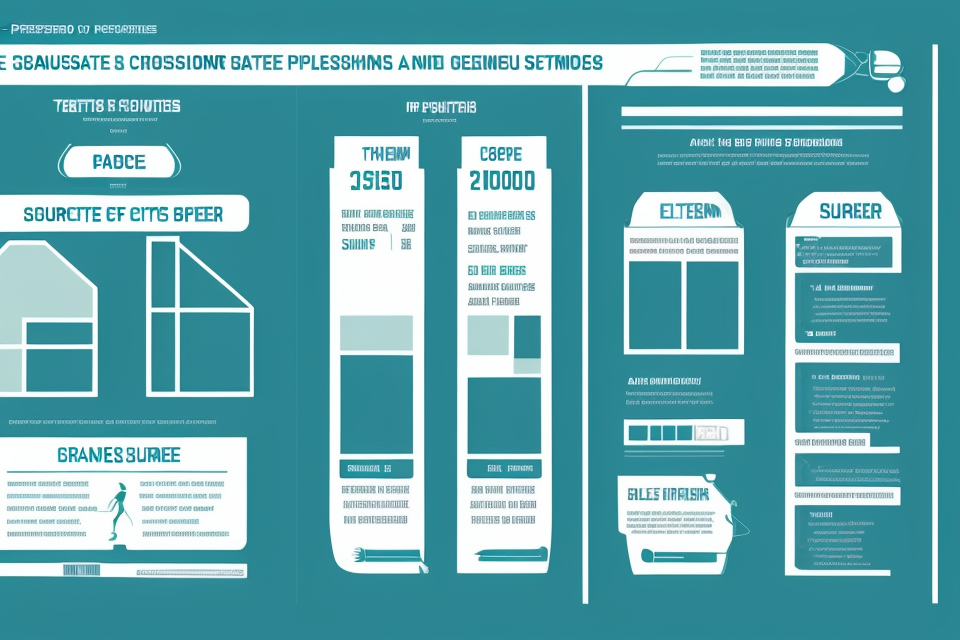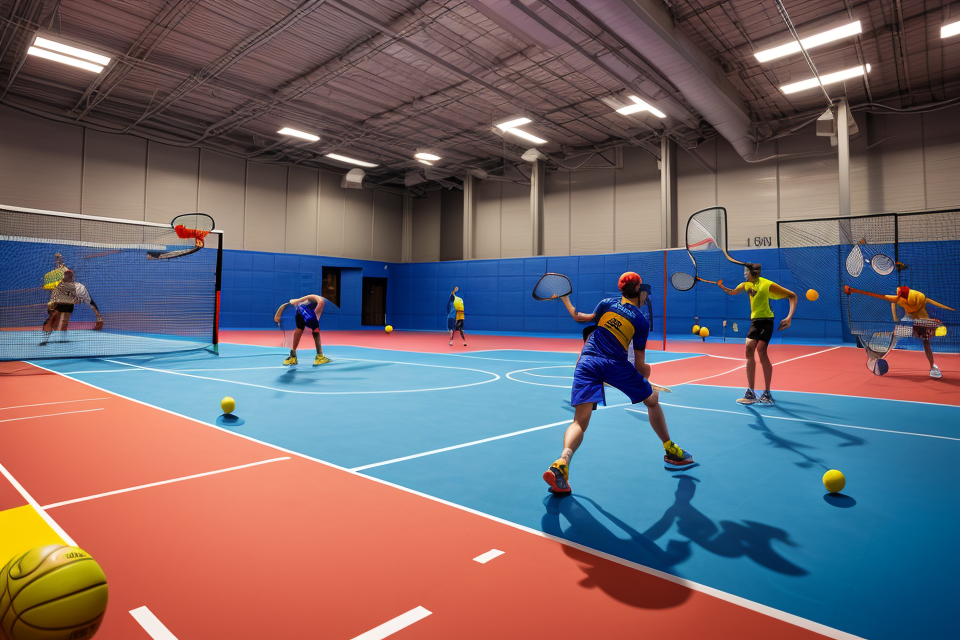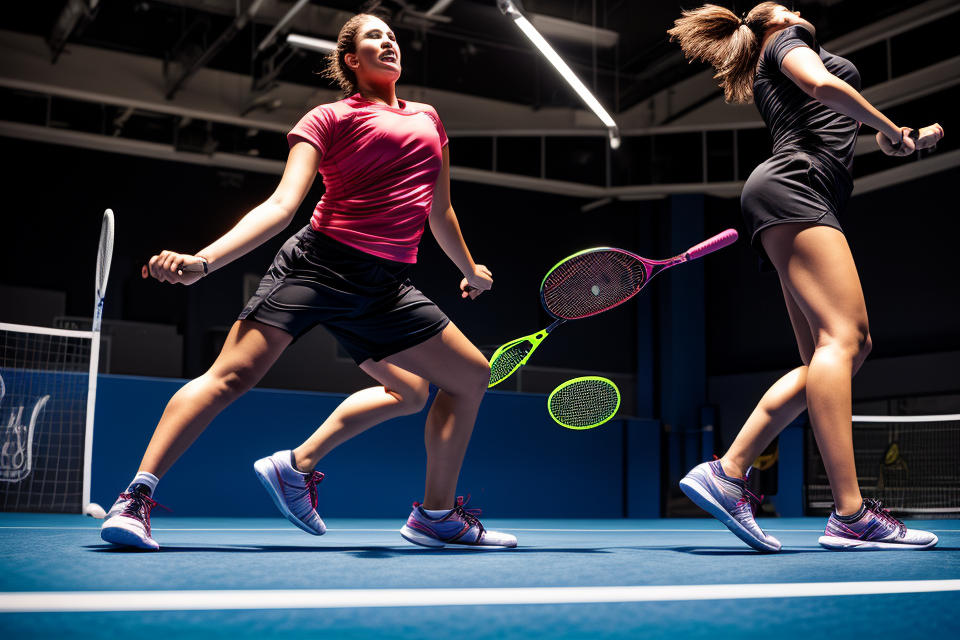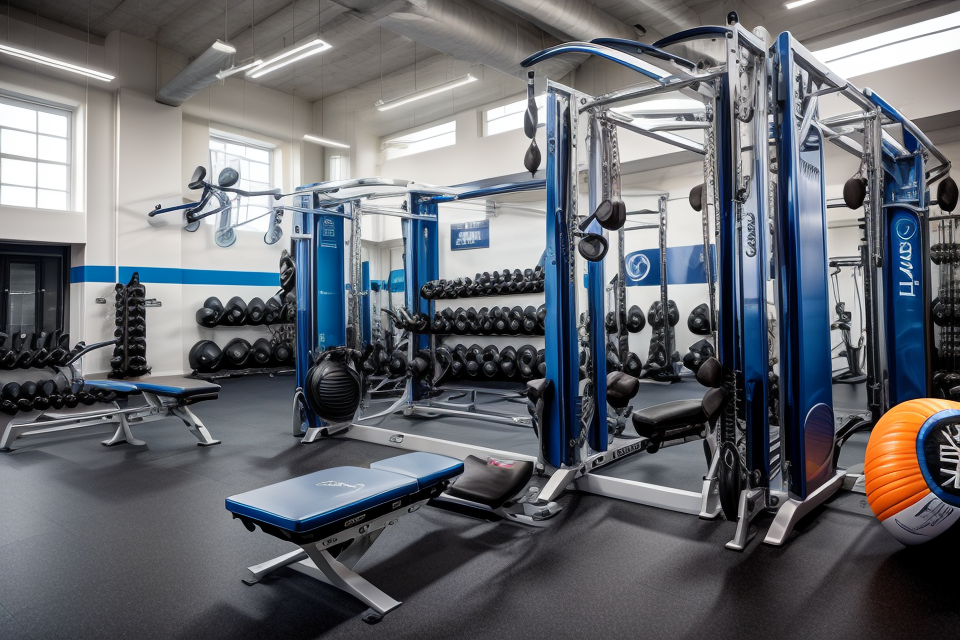Are you a sports enthusiast who loves to play indoor games? Then you must have heard of squash and racket ball. Both these games are played with a racquet and a ball, but there are several differences between them. In this article, we will explore the differences between squash and racket ball, so that you can decide which game suits you better. From the size of the court to the type of ball used, we will cover all the aspects that set these two games apart. So, let’s dive in and find out what makes squash and racket ball unique!
Squash and racketball are both racquet sports played in a court, but they have some key differences. Squash is a faster-paced game that is played with a small, dense rubber ball, while racketball is played with a larger, less dense ball that travels at a slower speed. The court size and shape are also different, with squash courts being smaller and more narrow, while racketball courts are larger and more rectangular. Additionally, the racquets used in the two sports are different, with squash racquets being smaller and more maneuverable, while racketball racquets are larger and more powerful. Overall, squash is a more physically demanding and technically challenging sport, while racketball is often seen as a less intense and more accessible version of the game.
What is squash?
The Basics
Squash is a racket sport that originated in England in the late 19th century. It is played by two players in a four-walled court using a small, heavy ball and a squash racquet. The objective of the game is to hit the ball in such a way that your opponent is unable to return it, or to force them into making an error.
History of the sport
Squash was first played at the Harrow School in London in the 1830s, and the first official rules were drawn up in 1889. The sport gained popularity in the United States in the early 20th century, and the first national championship was held in 1904. Today, squash is played by millions of people around the world, with professional tournaments held in countries such as Egypt, France, and the United States.
How to play squash
To play squash, players must first warm up and stretch to prevent injury. They then take turns serving the ball to their opponent, with the serve alternating between games. The objective of the game is to hit the ball in such a way that your opponent is unable to return it, or to force them into making an error. Players can hit the ball with their racquet anywhere on the court, and the ball must bounce on the opponent’s side of the court before it can be returned.
Rules of the game
The rules of squash are similar to those of other racket sports, such as tennis and racquetball. Some of the key rules include:
- The ball must be returned to the opponent’s side of the court after each point.
- Players are not allowed to obstruct the ball with their body or racquet.
- The ball may be played off the walls of the court, but only once per shot.
- Players may not hit the ball out of the court or into the corners of the court where they cannot reach it.
- The ball must bounce on the opponent’s side of the court before it can be returned.
Overall, squash is a fast-paced and physically demanding sport that requires excellent hand-eye coordination, endurance, and strategy.
What is racket ball?
Racket ball is a racquet sport that is played with a hollow rubber ball and a racquet. It is similar to squash in that it is played in an indoor court, but it has some distinct differences that set it apart from the more popular sport.
History of the sport
Racket ball was first introduced in the 1950s as a variation of squash, but it quickly became its own sport with its own unique rules and gameplay. The sport gained popularity in the United States and soon became a staple in sports clubs and recreational centers across the country. Today, racket ball is played by millions of people around the world and is considered a fun and accessible sport for players of all skill levels.
How to play racket ball
Racket ball is played with two players, and the objective of the game is to hit the ball in such a way that your opponent is unable to return it. The game is played with a hollow rubber ball that is similar in size to a squash ball, but it is slightly softer and bounces differently on the court. The game is played with a racquet that is similar to a squash racquet, but it is typically slightly lighter and has a larger head.
The game is played on a court that is similar to a squash court, but it is slightly larger and has different markings. The court is divided into two halves by a net, and the players take turns hitting the ball back and forth across the court. The game is typically played to a certain number of points, and the first player to reach that number of points wins the game.
Rules of the game
The rules of racket ball are similar to the rules of squash, but there are some key differences that players need to be aware of. For example, in racket ball, the ball can bounce more than once on the floor before being returned, and players are allowed to make one serve per rally. Additionally, the rules of racket ball allow for more variation in the type of shots that can be played, which can make the game more dynamic and exciting.
Overall, racket ball is a fun and accessible sport that is similar to squash in many ways, but it has its own unique rules and gameplay that set it apart from the more popular sport. Whether you are a seasoned squash player or a newcomer to the sport, racket ball is a great way to stay active and have fun while playing a challenging and rewarding game.
Squash vs. Racket Ball: Key Differences
Court size and layout
One of the most notable differences between squash and racket ball is the size and layout of the court. Squash courts are significantly smaller than racket ball courts, measuring 18.29 meters (60 feet) long by 9.14 meters (30 feet) wide, while racket ball courts are much larger, measuring 28.77 meters (93 feet) long by 12.2 meters (40 feet) wide. Additionally, squash courts have a slightly different shape, with rounded corners, while racket ball courts have sharp corners.
Equipment differences
Another difference between the two sports is the equipment used. In squash, players use a small, rubber ball and a racket with a narrow, slightly curved frame. The ball used in squash is also softer than the ball used in racket ball, which is made of a harder, more durable material. Racket ball players use a larger, heavier ball and a racket with a more open, oval-shaped frame.
Gameplay differences
The most significant difference between squash and racket ball is the gameplay. In squash, players use the walls of the court to bounce the ball off of, making it a fast-paced, high-intensity game that requires quick reflexes and strategic thinking. Racket ball, on the other hand, is played with a larger, heavier ball that players hit directly to each other, making it a slower, more controlled game that emphasizes accuracy and technique. Additionally, squash games are typically best-of-five sets, while racket ball games are typically best-of-11 points.
Squash Court
Features
Dimensions
Squash courts are typically smaller than racquetball courts, measuring 17,500 square feet compared to racquetball’s 1,500 square feet. This difference in size means that squash courts are better suited for a faster-paced game with more players.
Walls and Ceiling
Squash court walls and ceilings are made of a solid, non-reflective material that provides a consistent bounce for the ball. This ensures that the ball’s trajectory is not affected by the walls or ceiling, which is important in a fast-paced game like squash.
Lighting
Squash courts typically have brighter lighting than racquetball courts, which helps improve visibility and reduce eye strain during long matches.
Maintenance
Cleaning
Due to the high intensity of play, squash courts require regular cleaning to remove dirt, sweat, and other debris from the court surface. This helps to maintain the court’s integrity and prevent damage to the court’s surface.
Repairing
Squash courts may require repair from time to time due to damage caused by heavy play or accidents. This may include fixing cracks in the walls or resurfacing the court to restore its smoothness.
Resurfacing
Squash court surfaces may need to be resurfaced periodically to maintain their playing characteristics. This may involve sanding down the court, applying a new layer of paint or other coating, and allowing the court to dry before play can resume.
Racket Ball Court
- Dimensions: A racket ball court is typically larger than a squash court, measuring 20×40 feet compared to a squash court’s 17×32 feet.
- Walls and ceiling: Unlike squash courts, racket ball courts have walls and a ceiling that are not made of glass, but instead are made of masonry or other solid materials. This provides more opportunities for the ball to bounce and change direction during play.
-
Lighting: Racket ball courts typically have higher ceilings and more lighting than squash courts, which can make the ball easier to see during play.
-
Cleaning: Racket ball courts require regular cleaning to remove dirt, dust, and debris from the court surface.
- Repairing: The walls and ceiling of a racket ball court may need to be repaired periodically due to impacts from the ball or other equipment.
- Resurfacing: Over time, the court surface of a racket ball court may become worn or damaged. Resurfacing the court may be necessary to restore its original condition and ensure a level playing field.
Squash vs. Racket Ball: Which One to Choose?
When it comes to choosing between squash and racket ball, there are several factors to consider. Here are some key points to help you make an informed decision:
- Skill level and fitness: Squash is generally considered a more physically demanding sport than racket ball. It requires quick reflexes, excellent hand-eye coordination, and the ability to move quickly and change direction rapidly. Racket ball, on the other hand, is often played at a slower pace and is generally more accessible to players of all skill levels.
- Personal preferences: Ultimately, the choice between squash and racket ball comes down to personal preference. Some people may prefer the fast-paced nature of squash, while others may enjoy the more relaxed pace of racket ball. It’s important to try both sports and see which one you enjoy more.
Overall, the choice between squash and racket ball depends on several factors, including your skill level, fitness level, and personal preferences. By considering these factors, you can make an informed decision and choose the sport that’s right for you.
Squash Equipment
Essential gear
Squash is a racquet sport that requires specific equipment to play. The following are the essential gear needed to play squash:
- Squash racquet: A squash racquet is a smaller and lighter version of a tennis racquet, with a more rigid frame and a smaller sweet spot. The racquet’s weight typically ranges from 120 to 140 grams, and the strings are usually tighter than those in tennis racquets. Squash racquets come in different shapes, weights, and materials, and choosing the right one depends on your playing style and preferences.
- Squash ball: The squash ball is similar to a tennis ball but slightly smaller and lighter. It is made of a rubbery material that makes it bounce differently on the court, and it is designed to be hit with a lot of speed and spin. The ball is usually white and is made of a durable material that can withstand the high impact of being hit with a racquet.
- Other accessories: Other accessories that are essential for playing squash include goggles, which protect your eyes from the ball’s speed and impact, and non-marking shoes, which provide good traction on the court’s surface. Some players also wear wristbands, sweatbands, and other clothing items that help them move freely and stay comfortable during the game.
Maintaining your squash equipment is crucial to ensure that it lasts longer and performs well during games. The following are some tips for maintaining your squash gear:
- Caring for your racquet: To extend the life of your racquet, it is essential to clean it after each use. Use a soft cloth to wipe away any dirt or debris, and avoid using water or any other liquids that could damage the racquet’s structure. If your racquet has a graphite or carbon fiber frame, you should avoid exposing it to extreme temperatures, as this could cause it to warp or crack.
- Storing gear: After each game, it is important to store your gear properly to prevent damage and extend its lifespan. Squash racquets should be stored in a dry, cool place, away from direct sunlight or extreme temperatures. You should also ensure that your racquet is not in contact with any other objects, as this could cause it to bend or break. Squash balls should be stored in a cool, dry place, away from direct sunlight or heat sources.
- Cleaning and repairing equipment: Over time, your squash gear may become dirty or damaged, and it is essential to clean and repair it regularly to ensure that it performs well during games. Use a soft cloth to clean your racquet and balls, and avoid using any harsh chemicals or abrasive materials that could damage the equipment. If your racquet or balls are damaged, you may need to repair or replace them to ensure that they perform well during games.
Racket Ball Equipment
In order to play racket ball, players need to have the following essential gear:
- Racket: The most important piece of equipment is the racket, which is similar to a squash racket but has a slightly larger head and a longer handle. The racket is used to hit the ball during the game.
- Racket ball: The racket ball is a smaller, softer version of a squash ball, which is designed to be played with a racket. It is important to use the correct ball, as it can significantly affect the game.
- Other accessories: Players may also need other accessories such as eye protection, non-marking shoes, and athletic clothing.
In order to keep their equipment in good condition, players should take care of their racket and other accessories. This includes:
- Caring for your racket: Regularly checking the strings and grip, cleaning the racket after each use, and storing it in a safe place.
- Storing gear: Storing the racket and other accessories in a safe place where they will not be damaged or exposed to extreme temperatures.
- Cleaning and repairing equipment: Cleaning the racket and other accessories regularly, and repairing any damage as soon as possible to prevent further damage.
FAQs
1. What is the difference between squash and racket ball?
Squash and racket ball are two sports that are played with a small, hollow rubber ball and a racquet, but there are several differences between the two sports.
Squash
Squash is a racquet sport that is played in a four-walled court. The game is played with a small, hollow rubber ball and a racquet. The aim of the game is to hit the ball in such a way that it bounces off the walls of the court and goes past your opponent, who is standing on the opposite side of the court. The player who wins the most points in the game wins the match.
Racket ball
Racket ball is also a racquet sport that is played in a court, but it is played in an open court, usually outdoors. The game is played with a small, hollow rubber ball and a racquet. The aim of the game is to hit the ball in such a way that it goes past your opponent, who is standing on the opposite side of the court. The player who wins the most points in the game wins the match.
2. What is the difference in the size of the court?
The size of the court is one of the main differences between squash and racket ball. A squash court is much smaller than a racket ball court. A squash court measures 32 feet by 21 feet, while a racket ball court measures 40 feet by 20 feet. This means that the players have less space to move around in a squash court, which makes the game faster and more physically demanding.
3. What is the difference in the rules of the game?
The rules of the game are also different between squash and racket ball. In squash, the ball can bounce off any part of the wall, including the floor and the ceiling, and it can be hit with the racquet in any direction. In racket ball, the ball must bounce off the front wall of the court before it can be hit by the player, and it can only be hit in one direction, away from the player.
4. What is the difference in the equipment used?
The equipment used in squash and racket ball is also different. In squash, the racquet is usually smaller and lighter than a racket ball racquet, and it has a smaller string bed. The ball used in squash is also smaller and harder than the ball used in racket ball. In racket ball, the racquet is larger and heavier than a squash racquet, and it has a larger string bed. The ball used in racket ball is also larger and softer than the ball used in squash.
5. Which sport is better for beginners?
Both squash and racket ball are great sports for beginners, but some people may find it easier to learn and play one sport over the other. If you are looking for a sport that is played in a smaller court and has faster-paced action, then squash may be the better choice for you. On the other hand, if you are looking for a sport that is played in a larger court and has a slower pace, then racket ball may be the better choice for you.










